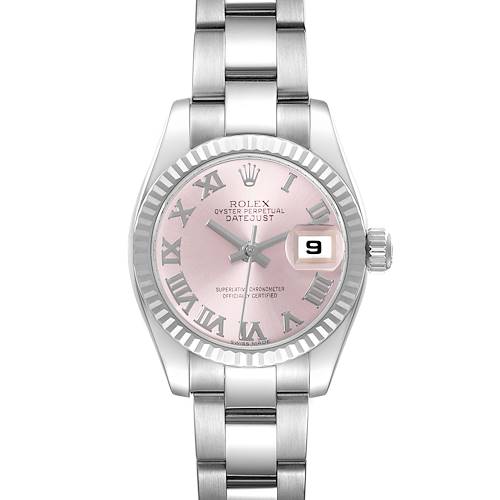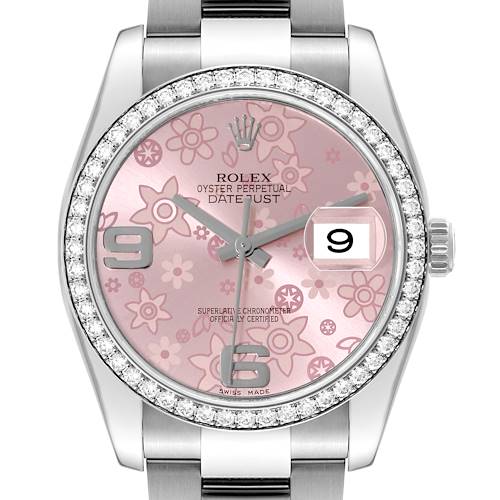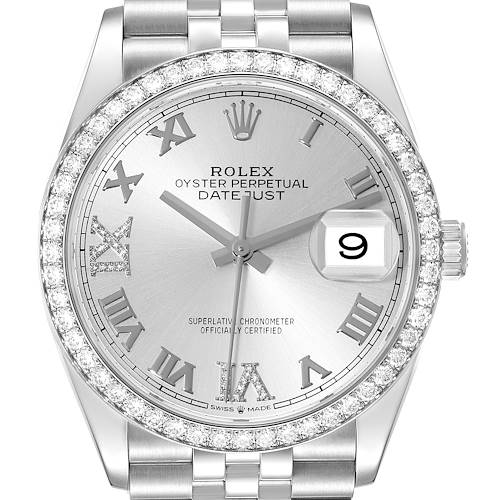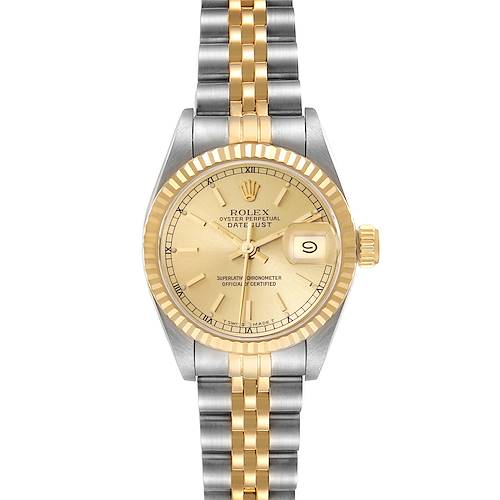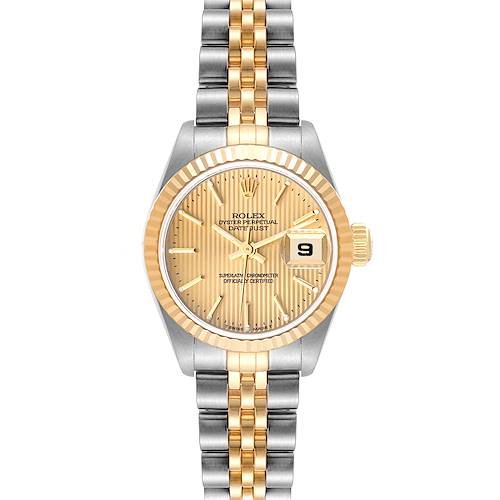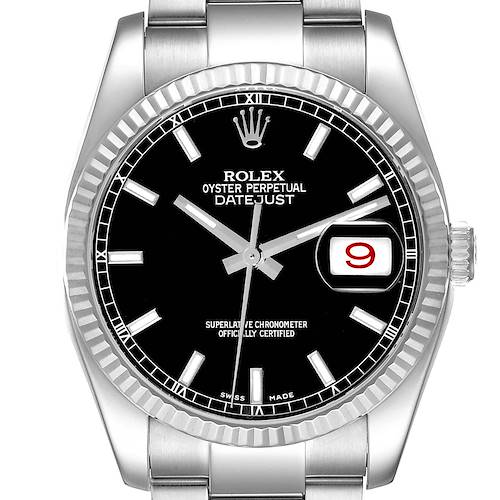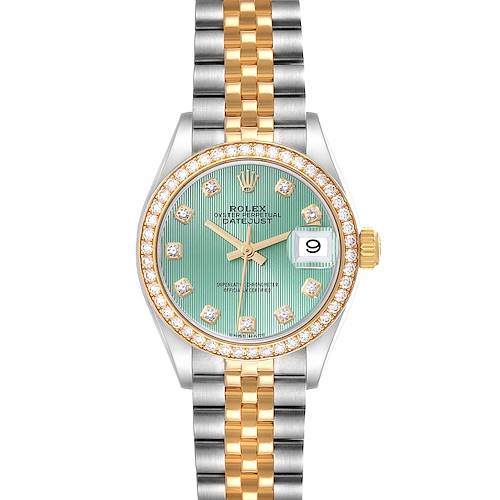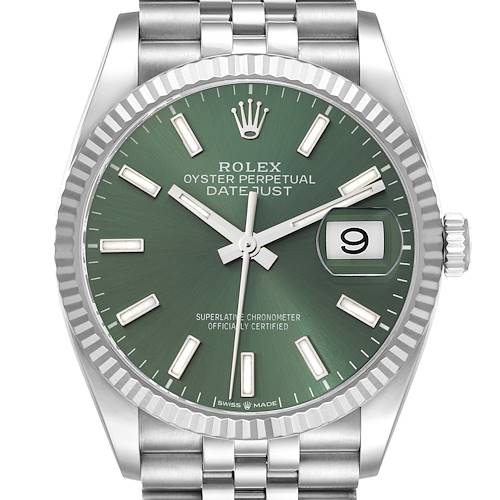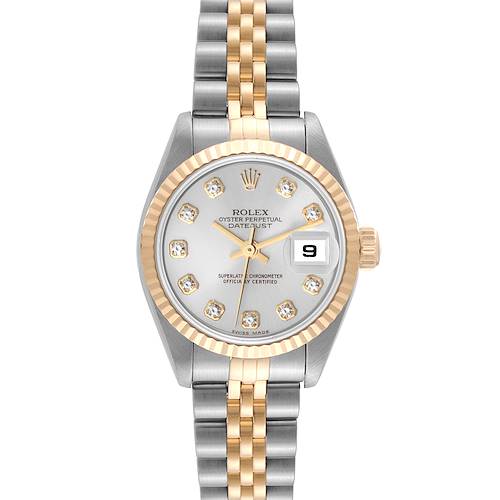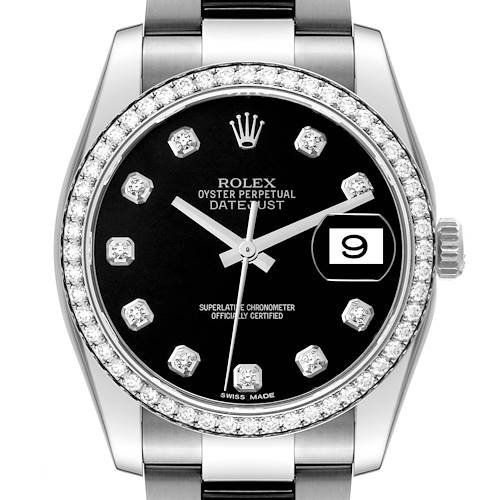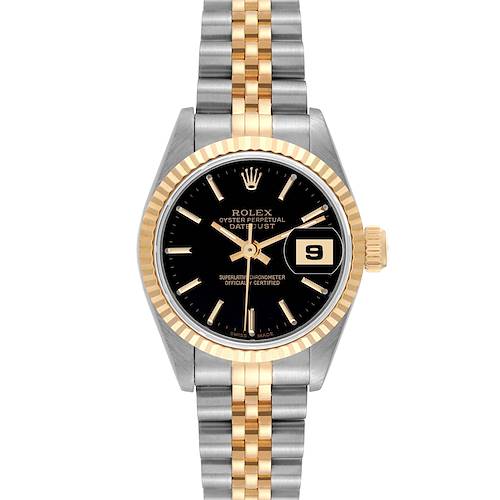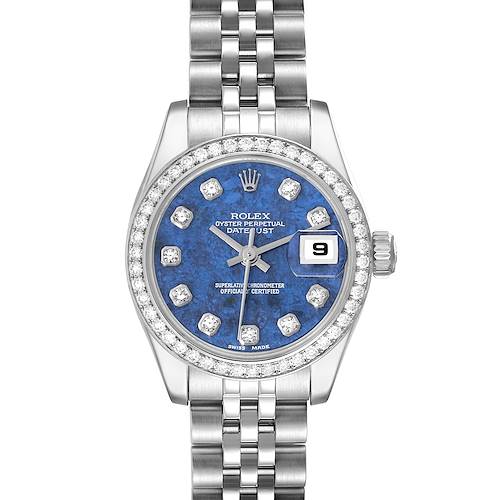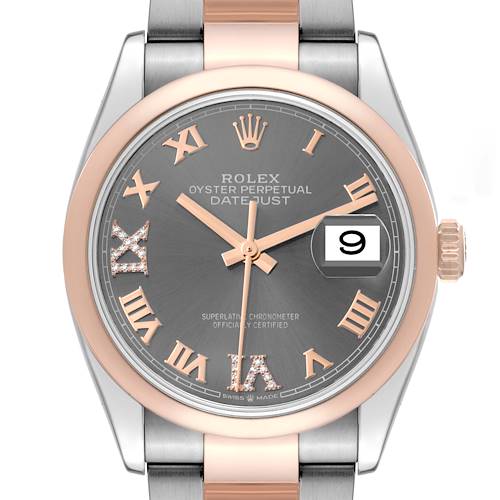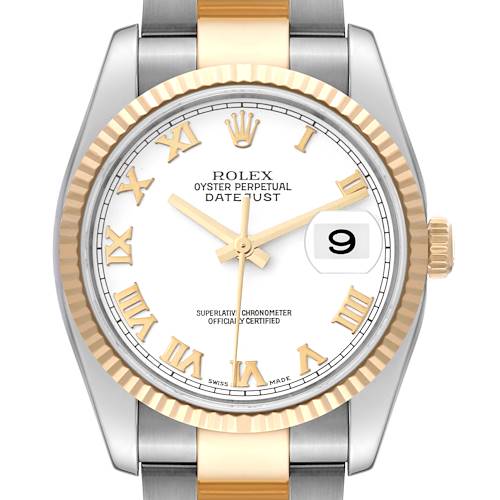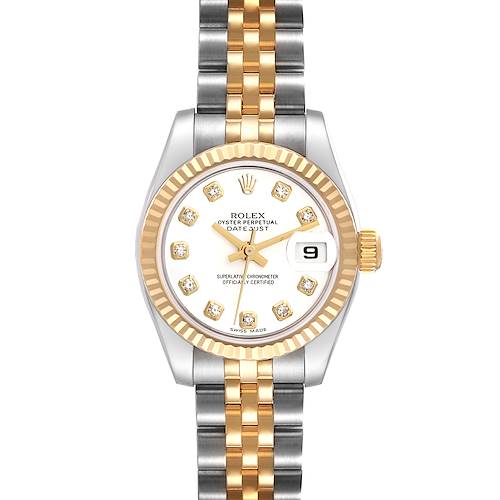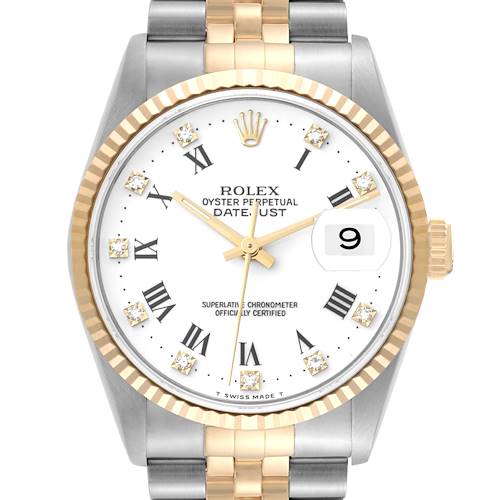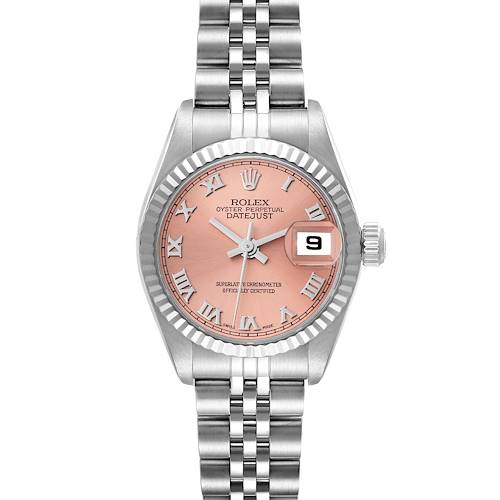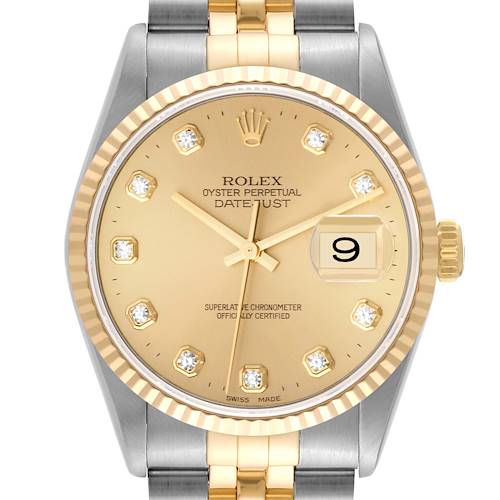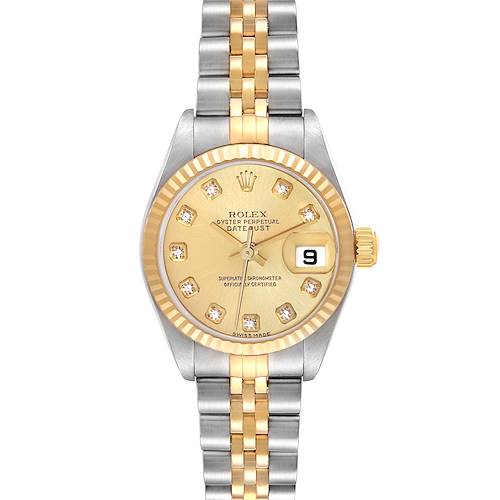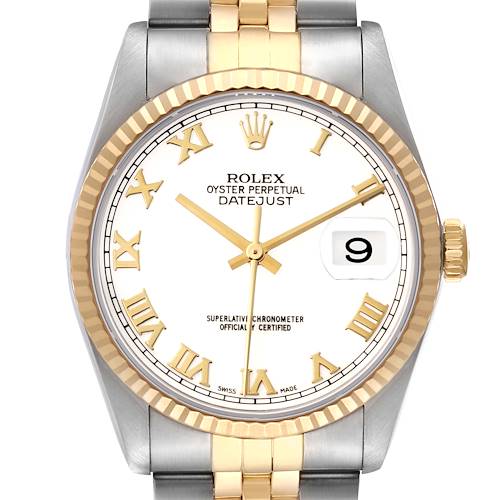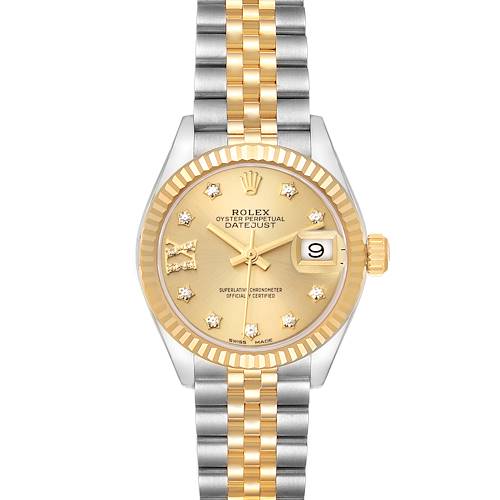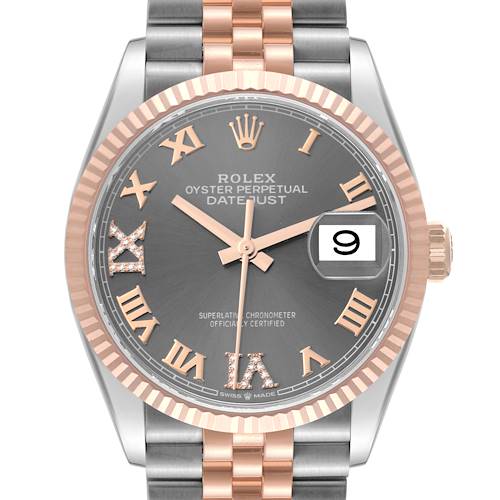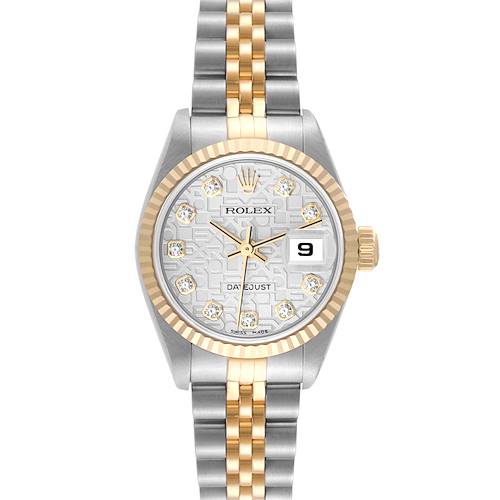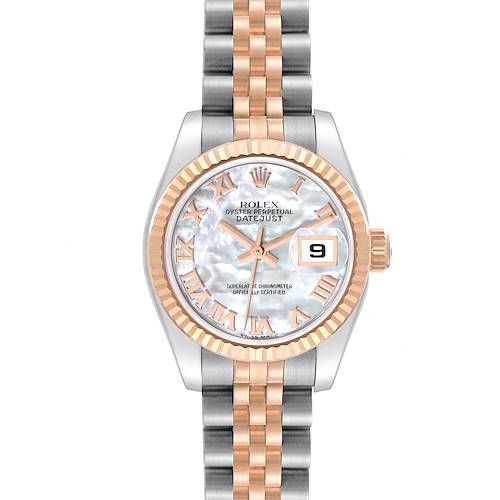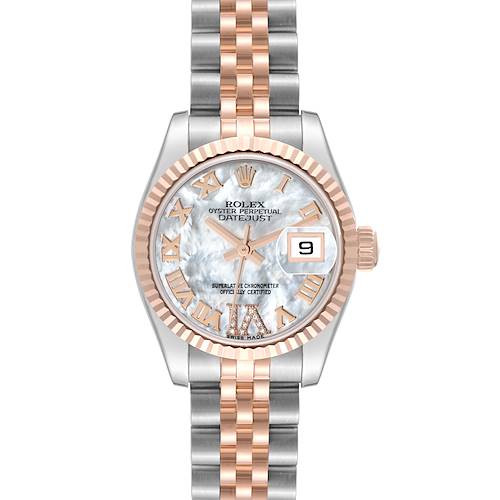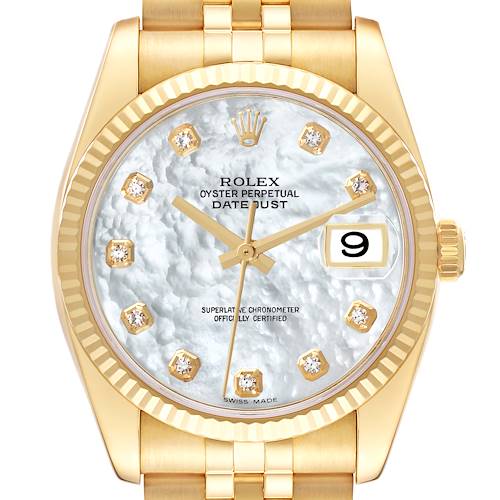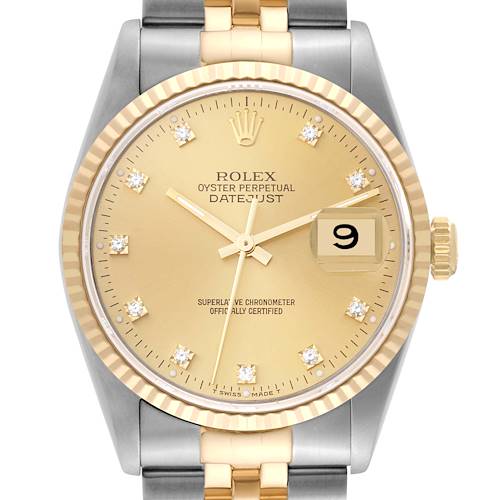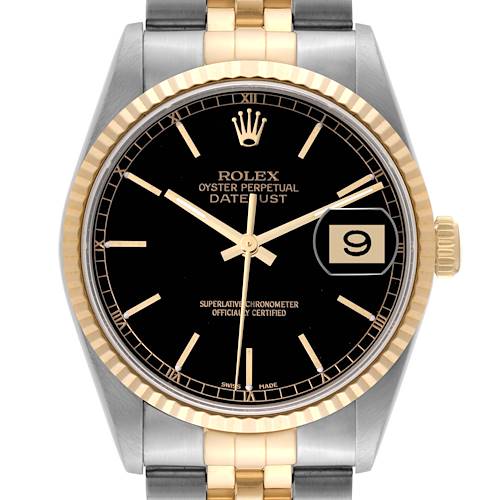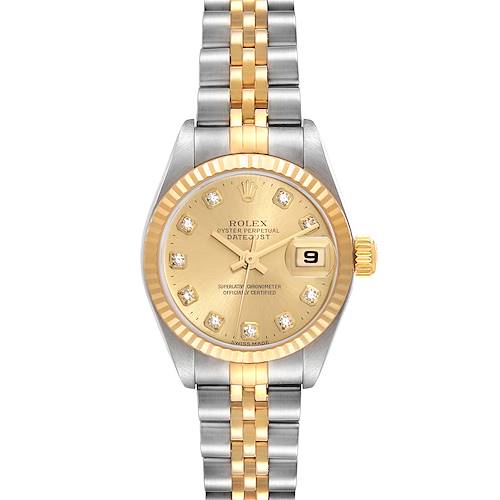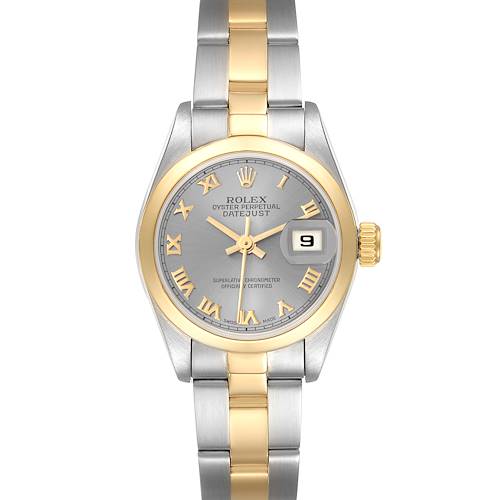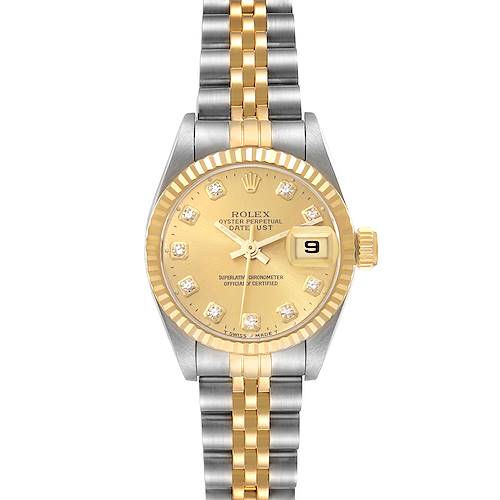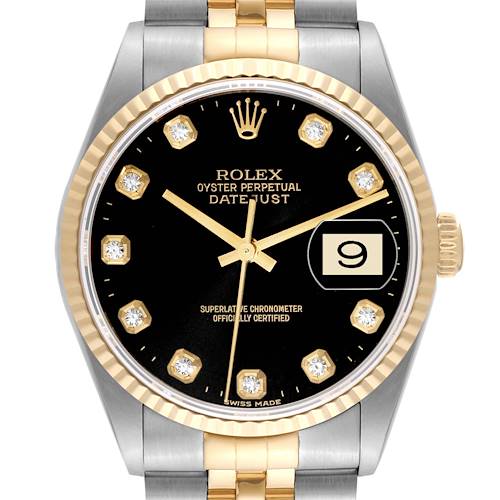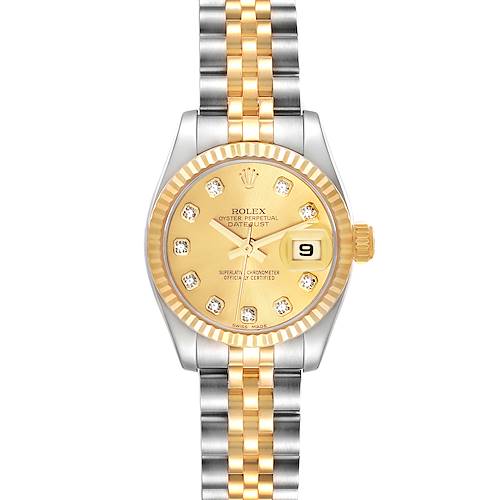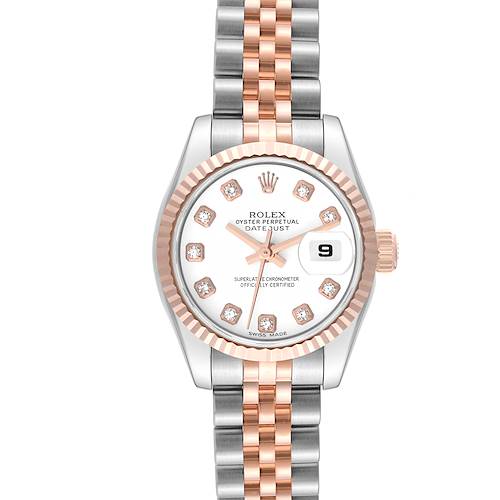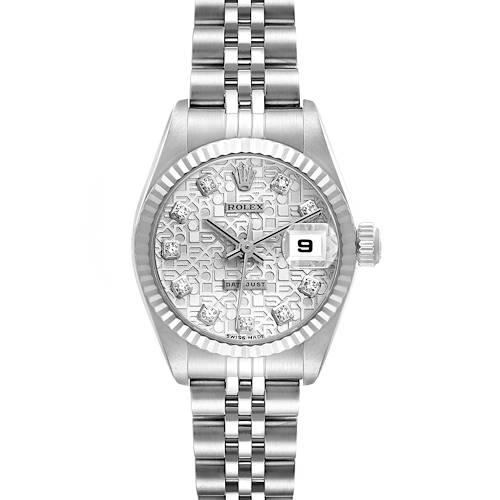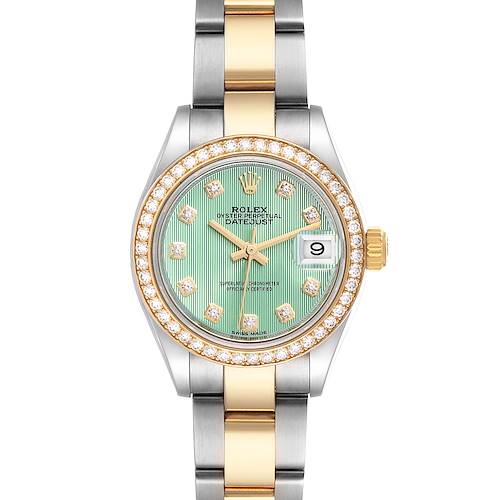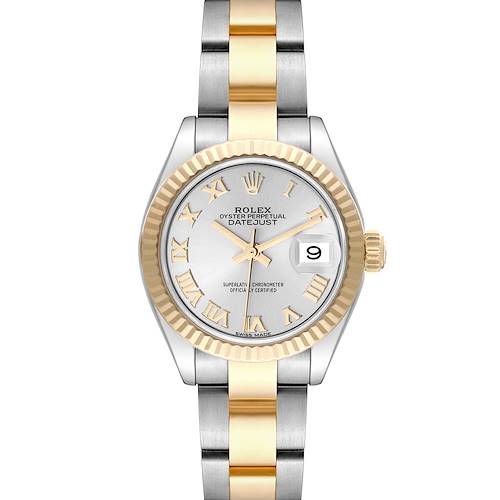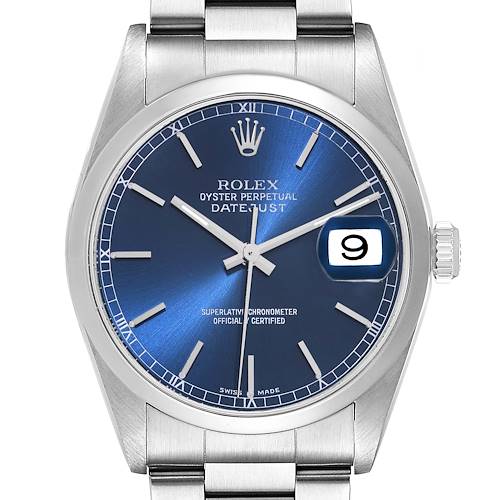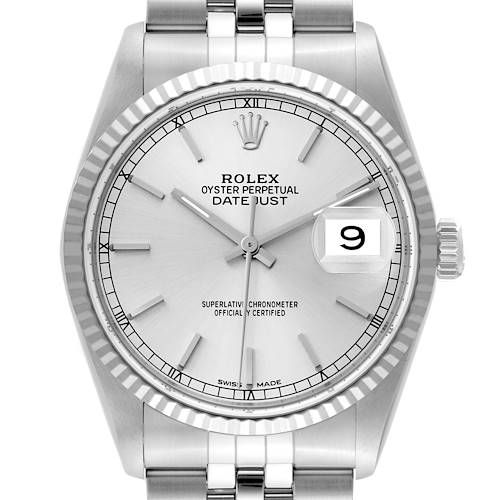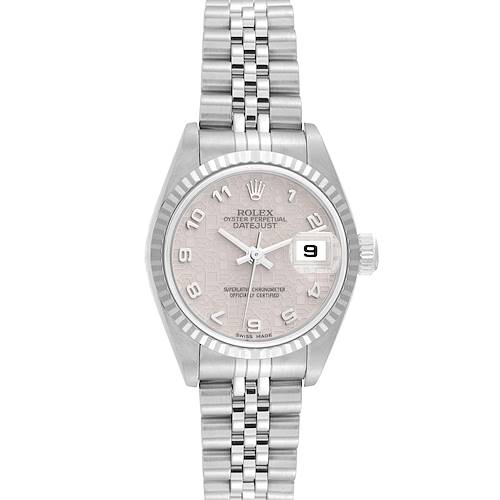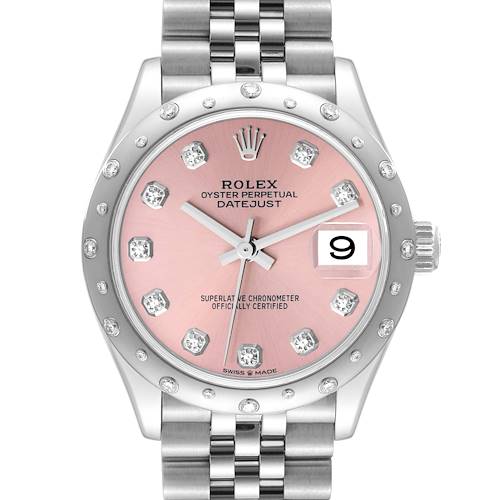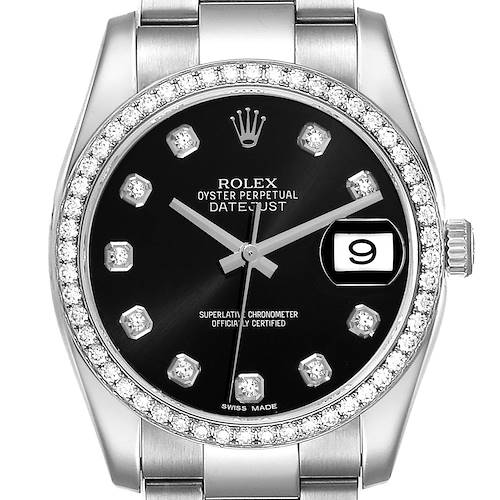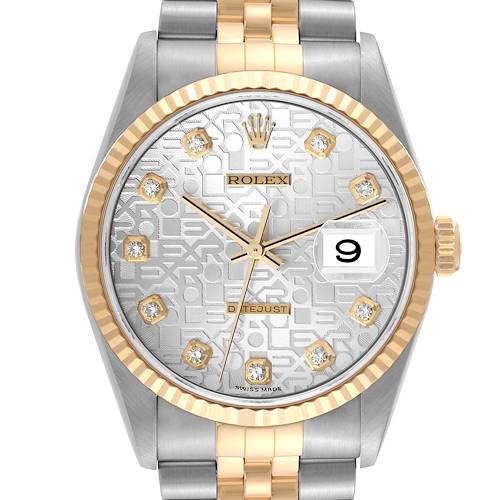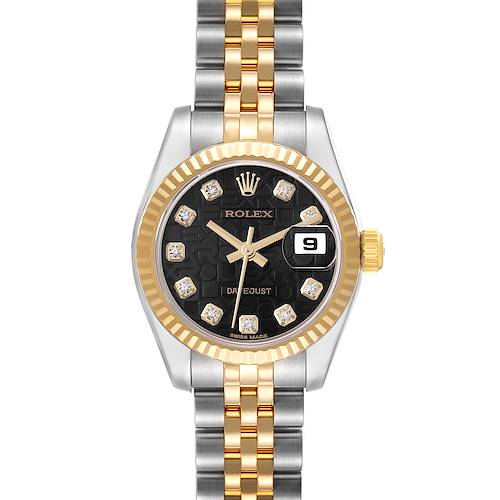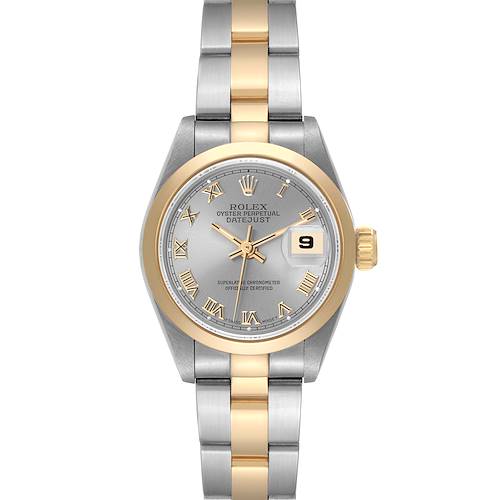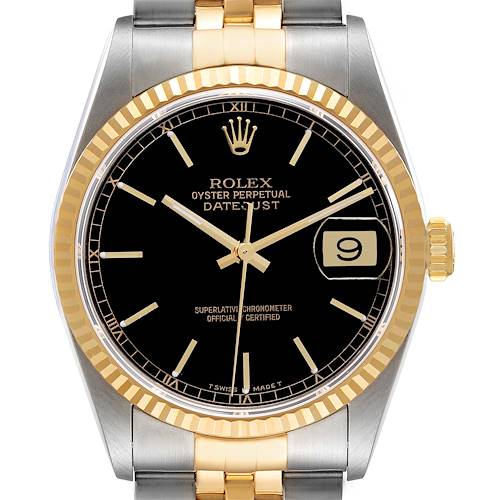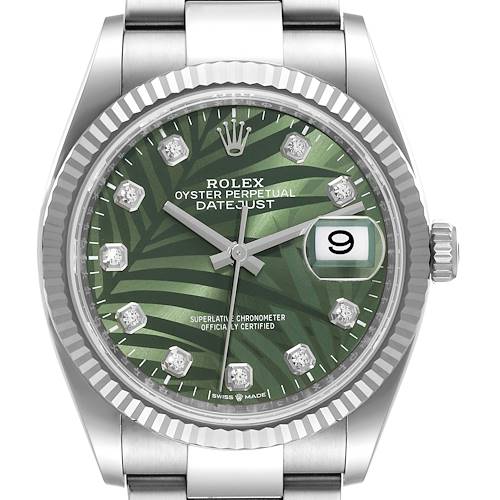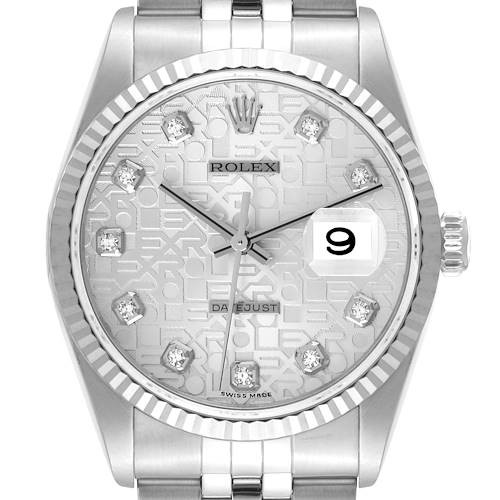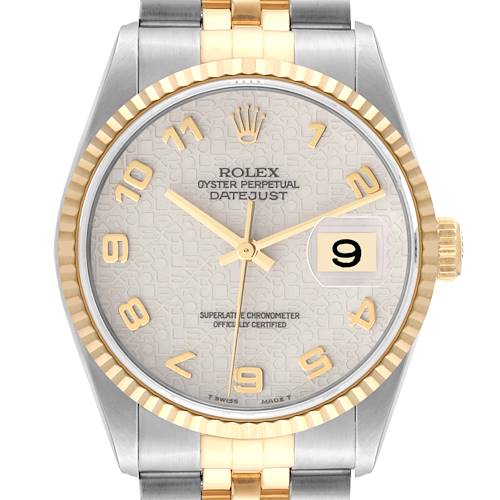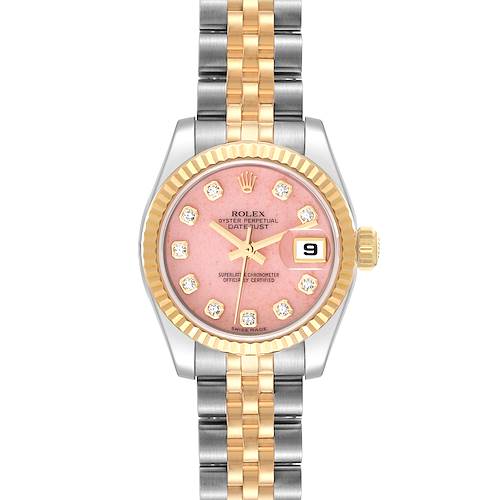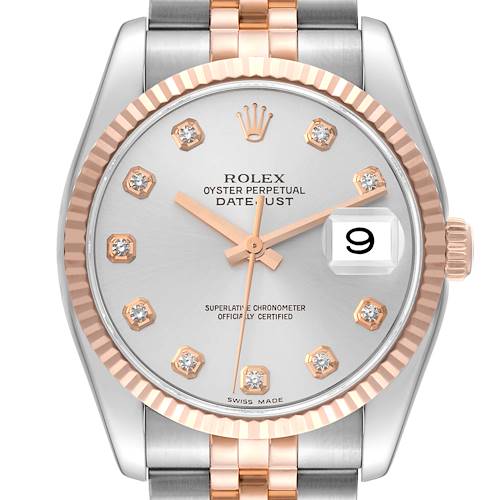- CALL US (404) 814-1814
- LIVE SUPPORT
- EMAIL US
-
WISHLIST (0)
-
CART(0)
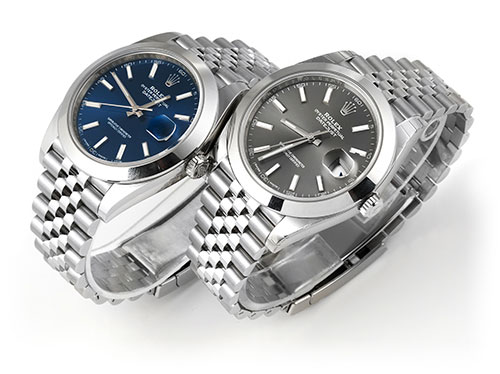
Datejust | Rolex Watch Collection
8,610 MATCHES FOUND
IN STOCK
Rolex Datejust Collection

The Rolex Datejust is the emblematic Rolex watch, and the archetype of the modern timepiece. Introduced in 1945, the Datejust is the world’s first watch to feature an automatically changing date function. This new calendar system, its placement at 3 o’clock, and the magnifying Cyclops lens forever set the standard for the now ubiquitous date complication.
Aside from this groundbreaking feature, the Rolex Datejust’s simple, elegant design and its ability to adapt to changes in trends and taste has elevated it to an iconic status. The Datejust is a watch for all people and seasons, and it remains Rolex’s best-selling watch, even after decades of production.
The Rolex Datejust has graced the wrists of the most discerning individuals all over the globe – from leaders like Dwight Eisenhower and Ronald Reagan, to luminaries like Roger Federer, Daniel Craig, and Jennifer Aniston. Throughout history, the Rolex Datejust has maintained its unparalleled enigma while evolving with the times. Explore our collection of Rolex Datejust watches at SwissWatchExpo.com.
A BRIEF HISTORY OF THE ROLEX DATEJUST
The Rolex Datejust was introduced in 1945, to celebrate the company’s 40th anniversary. It was designed as a classic and reliable wristwatch possessing the company’s signature Oyster case and chronometer-certified automatic caliber, but with the addition of a then groundbreaking feature – a date display at 3 o’clock, which automatically changed at midnight.
Rolex also developed a brand-new bracelet for this model. Dubbed the Jubilee, it was a five-piece metal link bracelet that has been an option for the Rolex Datejust ever since.
Within a decade from its introduction, Rolex already enhanced the Rolex Datejust in notable ways. In 1953, Rolex added the Cyclops window on the exterior of the crystal, right above the date, for better legibility. In the mid-1950s, Rolex added the name DATEJUST to the dials, and updated the date mechanism to instantly change at midnight – both becoming permanent fixtures on the Datejust. Before the decade ended, Rolex redesigned the movement, shifting the silhouette of the Datejust from a “bubble back” to a flatter shape.
To accompany the men’s Datejust, Rolex introduced the Lady Datejust to the collection in 1957. It had the key features of the original Datejust, but with a smaller 26mm case.
Through the next decades, Rolex continued to improve the movements of the Rolex Datejust. One particularly significant development was the addition of the quickset feature in the 1970s, which allowed the date to be adjusted independent of the time.
It was also in the 1970s that Rolex began producing quartz watches, at the height of the Quartz Crisis. This led to the development of the Rolex Oysterquartz Datejust in 1977. Aside from being powered by what was then considered high-tech quartz calibers, they also featured trendy angular cases and integrated bracelets. The Oysterquartz line was produced until the early 2000s.
The next upgrade came in 1988, with the introduction of the Caliber 3135. This workhorse movement became the basis for all future Rolex calibers, with its better timekeeping and reliability. The Rolex Datejust also switched from acrylic crystals to scratch-resistant synthetic sapphire, just like the ones used on Rolex watches today.
In the 2000s, larger case sizes became the norm and the Datejust adjusted to the new market preference. The Rolex Datejust II was introduced in 2009, a 41mm version with a thicker case, offered alongside the traditional 36mm model. This model had a short run as it was deemed too bulky; and was then replaced by the Datejust 41 in 2016. The Datejust 41 answered the demand for a larger case size, while keeping the proportions of the original Datejust.
The latest updates to the Rolex Datejust line are the increased case size of the Lady-Datejust from 26mm to 28mm; and the introduction of the Caliber 3235 to the Rolex Datejust 36 range.
Even with modern upgrades, the Rolex Datejust has maintained its classic aesthetics and its place as the backbone of Rolex’s catalog.
KEY FEATURES OF THE ROLEX DATEJUST
With the vast variety of sizes, metals, dial colors and textures available, the Rolex Datejust is the brand’s most varied collection – there is certainly a Datejust for every preference. Yet, regardless of design variations, the Datejust is always instantly recognizable thanks to its iconic look. The features of the Rolex Datejust has evolved through the decades, but the following components remain:
OYSTER CASE
Invented by Rolex in 1926, the Oyster case was the world’s first waterproof case made for a wristwatch. Its patented system of screwing down the bezel, caseback, and winding crown against the middle case protects the movement from dust and moisture, and provides optimum water resistance. Each Rolex Datejust comes in an Oyster case, in a variety of sizes:
- Lady-Datejust - 26mm, 28mm and 31mm
- Rolex Date - 34mm
- Rolex Datejust - 36mm
- Rolex Datejust II and Datejust 41 - 41mm
DATE APERTURE WITH CYCLOPS
The distinguishing feature of the Rolex Datejust, from the very beginning, was the date aperture at 3 o’clock. With the addition of the instantaneous date mechanism, where the date instantly changes at midnight; and the Cyclops magnification lens to the surface of the crystal, the Rolex Datejust set the standard for how date complications should look and function.
SMOOTH or FLUTED BEZEL
Unlike the Rolex Submariner, GMT-Master, or Explorer which are tool watches, the Rolex Datejust has a decorative bezel over a functional one, with the exception of the Rolex Turnograph bezels. Its classic models come with either a smooth domed bezel, or a fluted bezel made of gold, for its two-tone designs. Meanwhile, there are also bezels decorated with diamonds and sapphires. The Rolex Datejust has been offered with the following bezel types:
- Smooth
- Fluted
- Gem-set
- Engine-turned (discontinued)
- Rotating Turn-O-Graph (discontinued)
OYSTER or JUBILEE BRACELET
The now iconic Jubilee bracelet was originally designed for the Rolex Datejust in 1945, and remains an option for the collection today. The Oyster bracelet features flat, three-piece links and is paired with the Oysterclasp; while the Jubilee has rounded five-piece links, and is fitted with a concealed Crownclasp. These two are the most commonly seen bracelets on the collection, however, other bracelet designs have been paired with sub-collections of the Rolex Datejust:
- Three-link Oyster
- Five-link Jubilee
- Three-link President (exclusive to Lady-Datejust and midsize Datejust models)
- Leather straps (discontinued)
- Integrated Jubilee and Oyster (exclusive to Oysterquartz and discontinued)
EVOLUTION OF THE ROLEX DATEJUST COLLECTION
The Rolex Datejust has been manufactured since 1945. Like all Rolex watch models, the Datejust has received a number of movement and aesthetic upgrades throughout its history, as Rolex continuously works to improve upon its iconic designs. Here are the different generations of Rolex Datejust watches and their distinct features.
1940s – 1950s
Reference numbers: 4XXX, 5XXX, 61XX, 63XX
The earliest models of the Rolex Datejust had domed case backs to accommodate the movement, which are dubbed “bubble backs”. They also did not bear the DATEJUST name on the dial until 1957.
1960s
Reference numbers: 66XX
Movements: Caliber 1065 automatic movement
This generation ushered in the flat case back and thinner silhouette of the Datejust still seen today. The DATEJUST text also began appearing on the dial. The acrylic crystal was also equipped with the Cyclops lens, which magnifies the date up to 2.5 times for better legibility.
1959 - 1977
Reference numbers: 16XX
Movements: Caliber 1560 or 1570 automatic movement
Equipped with a new movement, this generation of Datejust watches have the hacking function, where one can set a watch’s second hand together with the minutes and hours. The markers now have luminescence for better readability. Earlier examples have radium lume, before Rolex switched to tritium in 1963.
1977 – 1987
Reference numbers: 160XX
Movements: Caliber 3035 automatic movement
This generation features the quickset date function, where the user can independently adjust the date display without adjusting the hands that display the time.
1977 – 2000s / Rolex Datejust Oysterquartz
Reference numbers: 17XXX, 190XX, 191XX
Movements: Caliber 5035 quartz movement
This sub-collection of Datejust watches feature Rolex’s 5035 quartz movement. This was the only instance of quartz watches from Rolex, who had to adapt to the Quartz Revolution. These watches also feature more angular cases, and integrated Oyster and Jubilee bracelets.
1988 – mid 2000s / Five Digit Rolex Datejust Models
Reference numbers: 162XX
Movements: Caliber 3135 automatic movement
Along with the new Caliber 3135, the Rolex Datejust now had scratch-resistant sapphire crystals to protect the dial. Rolex also began using higher-grade 904L steel for select references. By the late 1990s, the tritium luminescence was replaced with LumiNova and eventually Super-LumiNova in the 2000s.
2000s – 2009 / Six Digit Rolex Datejust Models
Reference numbers: 1162XX
Movements: Caliber 3135 automatic movement
The mid-2000s marked the arrival of redesigned Datejust cases. These contemporary styles feature thicker lugs and updated bracelets with polished center links, solid end-links, and Easylink clasps.
2009 – 2015 / Rolex Datejust II
Reference numbers: 1163XX
Movements: Caliber 3136 automatic movement
To adapt to the growing popularity of larger watches, Rolex introduced the Datejust II In 2009. With its 41mm case, this marked the first time that Rolex offered a men’s size aside from the original 36mm. Aside from the larger case, it also featured thicker lugs and a wider bezel.
2016 – present / Rolex Datejust 41
Reference numbers: 1263XX
Movements: Caliber 3235 automatic movement
In 2016, Rolex discontinued the Datejust II in favor of the Datejust 41. While it kept the 41mm case size, the new Datejust 41 had proportions similar to the classic Datejust, and was fitted with a new-generation movement. The Datejust 41 is considered a more elegant take than the robust and sporty Datejust II. Additionally, the Datejust 41 offers an option between the Oyster and Jubilee bracelet.
2018 – present / New generation Rolex Datejust 36
Reference numbers: 1262XX
Movements: Caliber 3235 automatic movement
In 2018, Rolex updated the Datejust 36 collection with the new-generation Caliber 3235 movement. The in-house automatic movement offers a longer 70 hour power reserve, and is two times more precise than an officially certified chronometer, with an accuracy of -2/+2 seconds per day.
ROLEX DATEJUST REFERENCE NUMBERS
The tables below show the reference numbers of Rolex Datejust through the years.
VINTAGE ROLEX DATEJUST REFERENCES
| REFERENCE SERIES | YEAR PRODUCED |
| 4XXX | 1945 – 1950s |
| 5XXX | 1945 – 1950s |
| 61XX | 1945 – 1950s |
| 63XX | 1945 – 1950s |
| 66XX | 1957 |
| 16XX | 1959 - 1977 |
| 160XX | 1977 - 1987 |
| 17XXX (Oysterquartz) | 1977 – 2000s |
| 190XX (Oysterquartz) | 1977 – 2000s |
| 191XX (Oysterquartz) | 1977 – 2000s |
| 162XX | 1988 – 2000s |
MODERN ROLEX DATEJUST REFERENCES
| REFERENCE SERIES | YEAR PRODUCED |
| 1162XX | mid-2000s |
| 1163XX (Datejust II) | 2009 - 2015 |
| 1263XX (Datejust 41) | 2016 - |
| 1262XX | 2018 - |
COMMON QUESTIONS ABOUT THE ROLEX DATEJUST
The Rolex Datejust was the first self-winding wristwatch to have a date window aperture. Because of its classic style, it is one of Rolex’s best-selling models. Here are answers to the most frequently asked questions about the Rolex Datejust.
WHAT IS A ROLEX DATEJUST?
The Rolex Datejust is a classically-designed self-winding chronometer wristwatch introduced by Rolex in 1945. It is characterized by an Oyster case and a date display at 3 o’clock.
IS THE ROLEX DATEJUST A GOOD WATCH?
The Rolex Datejust has been a staple of the Rolex catalog since its debut in 1945, making it one of the brand’s oldest models still in production. Its classic design – with an Oyster case, date aperture at 3 o’clock, and a choice between Oyster and Jubilee bracelets – has changed very little over the decades.
This classic design has allowed Rolex to make it one of their most comprehensive collections. It comes in a variety of sizes – from 26 to 41mm in diameter – and with seemingly endless combinations of metals, dial colors and textures, and a choice between smooth and fluted bezels, Arabic and Roman numerals, and Oyster, Jubilee and President bracelets.
With a classic design and a wide variety of styles on offer, the Rolex Datejust is a great watch for those who want an all-occasion timepiece.
HOW CAN I TELL IF MY ROLEX DATEJUST IS REAL?
The illustrious status of the Rolex Datejust makes it a target of many counterfeiters. Being a Rolex, the Datejust is made to the highest standards and using the highest-quality materials. Before buying your watch, look for any signs of sub-standard manufacturing. For example, check for any missing or misaligned text, see if the Cyclops lens is perfectly centered over the date, and lookout for a seconds hand that jumps from one second to the next, instead of a sweeping motion. If even the smallest detail comes across as shoddy, you can be certain that it’s not a real Rolex.
When buying a luxury watch, it is essential to do research on your chosen model and reference. Becoming familiar with your chosen watch’s details will help you more easily spot a fake. As we always advise clients, your best defense against buying a fake timepiece is to get your watch from a reputable and trusted dealer, who can provide a guarantee of authenticity on the watch.
HOW OFTEN SHOULD A ROLEX DATEJUST BE SERVICED?
Rolex generally recommends for professional servicing every 10 years to maintain your watch’s accuracy and waterproofness. However, this would all depend on how your watch is used and stored. There may be signs that your watch needs a service sooner rather than later. Here are Signs It’s Time for Watch Maintenance.
HOW DO I WIND A ROLEX DATEJUST?
You would have to wind your watch if it is being worn for the first time, or if it has stopped. To do this, unscrew the winding crown until it pops out of its position and is free from the threads holding it onto the case. Then, turn it several times away from you (clockwise). We recommend at least 25 turns for adequate winding. The watch will stay wound automatically as long as it is worn regularly.


